Pianist Indrek Laul has in twenty years built up an internationally reputable brand for the piano maker bearing the name of his homeland – Estonia.
In 1994, the then-26-year old Estonian pianist Indrek Laul, having freshly graduated with a master’s degree while continuing on his doctorate at the prestigious New York Juilliard School of Music, had a visionary moment. While looking for new opportunities and challenges, he came up with a vision few of his countrymen dared even think about at the time: to start making a new piano model and importing pianos made in and bearing the name of his homeland, Estonia, to the North American market. Now, twenty years later, the Estonia brand is a familiar name among American and Canadian piano lovers and buyers, and the demand is higher than the extremely quality-conscious factory’s current production.
The history of the country of Estonia, the piano maker bearing the same name and the family of its saviour, share many historical traits – in times it has run like a parallel story. The common theme is music.
From playing an Estonia piano to selling it around the world
Indrek Laul was born into a well-known musical family in Estonia: his mother, Reet, is a concert pianist, and his father, Venno, is a conductor and the founder of the Estonian Boys’ Choir. Indrek was six years old when his parents bought their first Estonia piano and inspired their son to start playing it. Even at that tender age, the piano had a huge impact on him. “The awe and magnificence of the beautiful musical instrument in our home mesmerised me,” says Laul.
The first piece he learned to play, when not distracted by tennis, was Chopin’s Etude No 1. By the time he was thirteen, he won 1st Prize and a special award for performing Rakhmaninov at an international competition for young pianists. Further musical education followed at the Tallinn Conservatory, under the pianist Kalle Randalu.
It was at the turn of the 1980s-1990s, Estonia still officially occupied by the Soviet Union, when his life started to take on an international dimension. While participating in master classes in Ohrid, Yugoslavia, he met the Estonian piano professor Arbo Valdma. Convinced that he wanted to study under Valdma, he enrolled in the Belgrade Academy of Music, soon mastering the Serbian language in addition to improving his musical skills.
It was Valdma who recommended that Laul continue honing his skills in New York. “He told me that I was the kind of guy who would make it in the US – and I absolutely had to go there,” Laul says appreciatively. Despite the Soviet-era limitations and the financial challenges, Laul’s persistence paid off and he was accepted at the world-famous Juilliard School in New York (a little over ten years later, he would be named among the Juilliard’s top 100 graduates at its 100th Anniversary Celebration).
First working as a teacher’s assistant, he received the prestigious Horowitz Scholarship. Studying under the pianist Peter Serkin, Laul embraced the huge metropolis, but found time to engage with the local Estonian community as well, even playing organ for them once a month, an instrument that Laul also loves.
“Sometimes, we can do more for our country while living abroad”
While completing his doctorate in New York, word of an ailing Estonia piano maker reached him. Feeling confident about his abilities to break through in America, yet motivated by the urge to do something good for his birthplace, Laul sensed an opportunity: the chance to sell his beloved pianos in the massive US market.
“Sometimes, we can do more for our country while living abroad,” says Laul in his suggestive, slow-speaking, intelligent manner, when commenting on the moment he found his call of pianist-becomes-piano-manufacturer. “Looking back, I was certainly motivated by a mission to do something for Estonia, and selling the type of piano on which I learned to play as a child was also a pleasant task emotionally.”
Even Stalin liked Estonia pianos
Piano making in Estonia is older than the country’s independence. It was an art practised in Estonia as early as the late 18th century. The craft flourished and, by the early 20th century, there were nearly 20 independent piano companies, all in a country which at the time had fewer than one million people. The most notable of these manufacturers was Ernst Hiis, an Estonian master craftsman trained at Steinway-Hamburg, whose handmade piano from 1893 became the prototype of the Estonia piano.
After World War II, private manufacturers ceased to exist in Soviet-occupied Estonia. But in an ironic twist of fate, the Soviet dictator Joseph Stalin shut down smaller factories while allowing the production of Hiis-made pianos to continue. When Stalin turned 70, every Soviet republic was forced to present him with a gift. Estonia’s choice was a grand piano handmade by Hiis. Stalin liked the sound so much that he ordered the Estonia piano company to be the sole manufacturer of concert grand pianos for the entire Soviet Union.
The Soviet-era Estonia piano had a massive market at its disposal but, when its old founding craftsman Ernst Hiis passed away, the old knowledge drifted away and, as with most things in the ailing Soviet empire, the quality of the pianos gradually declined.
“By 1994, production had fallen to 50 pianos a year, down from the Soviet-era peak of nearly 500, and the quality had also declined,” remembers Laul. He approached the company and offered to market its products in the US. Soon, he also started to invest in the factory, gradually becoming the owner.
Failure was not an option for Laul, who brushes aside the question of whether he feared the challenge of selling an unknown brand in a massive market. “From the start, I set a big narrative. I knew that I wanted to make the Estonia piano great, but I didn’t want to cut corners: the emphasis was always on quality rather than quantity. Therefore, I expected it would be a long process and the changes were implemented slowly, to ensure the smooth running of the manufacturing process,” says Laul about the beginning of turning the company around.
Speaking of the Estonia piano with a passionate attachment, comparable of someone speaking about his loved children, Laul describes in detail, emphasising with his every word at how they started to improve the pianos step-by-step.
First, he started to attend trade fairs in the US where pianos were sold. Tips from local piano dealers came in handy. Europe’s foremost piano experts were brought in and, in collaboration with the Estonian Academy of Sciences, the instruments were redesigned. The best materials were used. The mechanical innards of the piano are now made by Germany’s Renner, the world’s best maker of hammerheads, shanks and flanges; the soundboard is made of Swiss spruce.
In a tech-savvy country, there was no escape from the computer either: in collaboration with the Estonian Institute of Cybernetics, the cast iron plate was analysed using a computer mode, and the resulting plate design improved the stability and balance of the piano. Over the years, hundreds upon hundreds of changes and improvements have been made to the Estonia piano.
Laul even engaged his parents: his mother started to test out every piano before it was sent to the US and his father ran the factory in Tallinn, while Indrek himself was busy looking for clients in America.
“Sometimes, in order to move forward, to improve, you have to look back”
Despite helpful foreign advice, Laul emphasises the importance of old expertise and experience in hand-making grand pianos in Estonia. While listening him affectionately describing in great detail how Estonia pianos are made, you’d be excused of imagining an almost magical manufacturing process where every little touch by Estonian piano craftsmen live on and reflect on the mellow sound of Estonia pianos.
“I’m extremely grateful to our craftsmen, who put great care into making Estonia pianos. For many, it’s knowledge that has been passed on from generation to generation. Sometimes, in order to move forward, to improve, you have to look back,” Laul explains.
The changes paid off. Upon entering the US market in the mid-nineties, Estonia pianos were among the lowest rated. Fast-forward twenty years, and they are among the highest rated. According to Larry Fine, the editor of Piano Buyer, the quality of the Estonia piano is at the same general level as the New York Steinway, yet the Estonia costs much less, causing the large network of Estonia dealerships in the US and Canada to constantly demand more pianos from Laul.
The Estonia piano is not just another piano – it is the piano of the singing nation
When reading the reviews of the Estonia piano, one cannot escape the descriptions of “the rich and lush singing sound”. According to Laul, the connection to the Estonian singing culture is very important in their company philosophy. Then there is also the idea that there is an organic, natural sound, not overly complicated, representing the Nordic country. “When I play it for our clients, I sometimes ask: ‘Do you hear the sound of the Nordic landscape here? The sound carries the feeling of the country’,” Laul says.
“The Estonia piano is an example of how a high value product can be successful and add value to Estonia, and at the same time represent the culture“
Indrek Laul likes the personal touch and engagement with Estonia piano owners. When Laul attends Estonia owners’ meetings in the US – yes, there are now so many Estonia pianos in America that the owners have formed club-like get-togethers – he also usually says a word or two about the Estonian singing and music culture in relation to the pianos, thus doubling as a unique ambassador for the country. “The Estonia piano is an example of how a high value product can be successful and add value to Estonia, and at the same time represent the culture,“ he says.
Returning to the roots
Indrek Laul lived away from Estonia for 24 years. Settling down in New York, his sons were born there and started to grow up as Americans. But when his boys were five and seven, Laul and his wife made the decision to return to the land of his ancestors. “One day we realised that it was time to move back to Estonia and let the children grow up in an Estonian language environment,” Laul says. “And it’s not just the language. I value the fact that my children are able to spend lots of time with their grandparents, who pass on the old traditions and knowledge: it’s about valuing the continuity of the identity,” he adds.
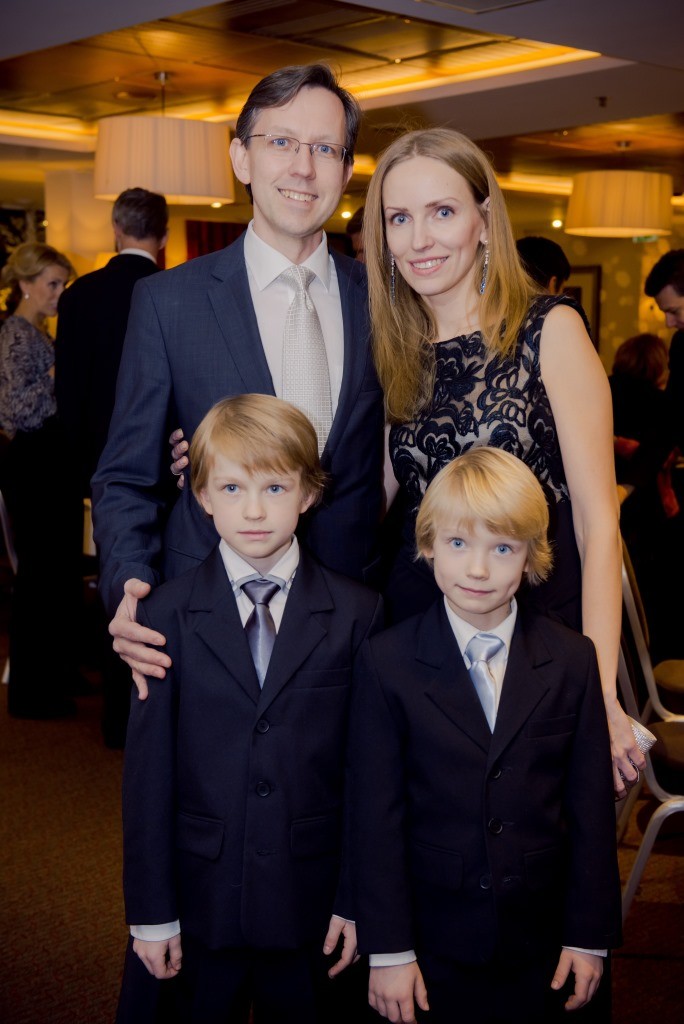
Laul is not the first in his family to try his luck in the wider world, yet return to Estonia. One of his ancestors, Jüri Laul, came to the US in the early 19th century, earned money and then went back to build a house on the island of Saaremaa, naming his sons Jakob and Bruno: the names Indrek Laul also chose for his own sons.
The old family music traditions are being carried on: his wife set up a piano studio in Tallinn and both of his sons are learning piano.
Laul himself now splits his time between Estonia and the US. Despite returning his base to Estonia, he thinks that whether one should return to one’s birthplace is up to the individual.
“The Estonia piano is now one of the best-known Estonian brands in the US. Would that have been possible without me living in the US? The answer is probably no. The question Estonians abroad can ask is what can be done for their birth country while living elsewhere. Some people can just do more for Estonia while abroad,” Laul says philosophically. “At the same time, while I have moved back to Estonia, my connection to the US has not disappeared.”
“The question Estonians abroad can ask is what can be done for their birth country while living elsewhere. Some people can just do more for Estonia while abroad”
But while he is busy selling Estonia pianos around the world, the next target being China, where he has already got a foot in the door, he still has time for what his products help to represent: music culture. Indrek Laul was a small boy when he first took part in the Song Festival: his dad was one of the conductors there and Laul has vivid memories. Taking part in this year’s Estonian Song Celebration was therefore natural for the Laul family – it’s all about continuity. And then there’s a new Estonia model 225 waiting to be played at home.
I
See also the short film about “Estonia’s best kept secret” – made by Canadians Kimberly Bagayawa and Mike Dell. Photos: Meeli Küttim and private collection.

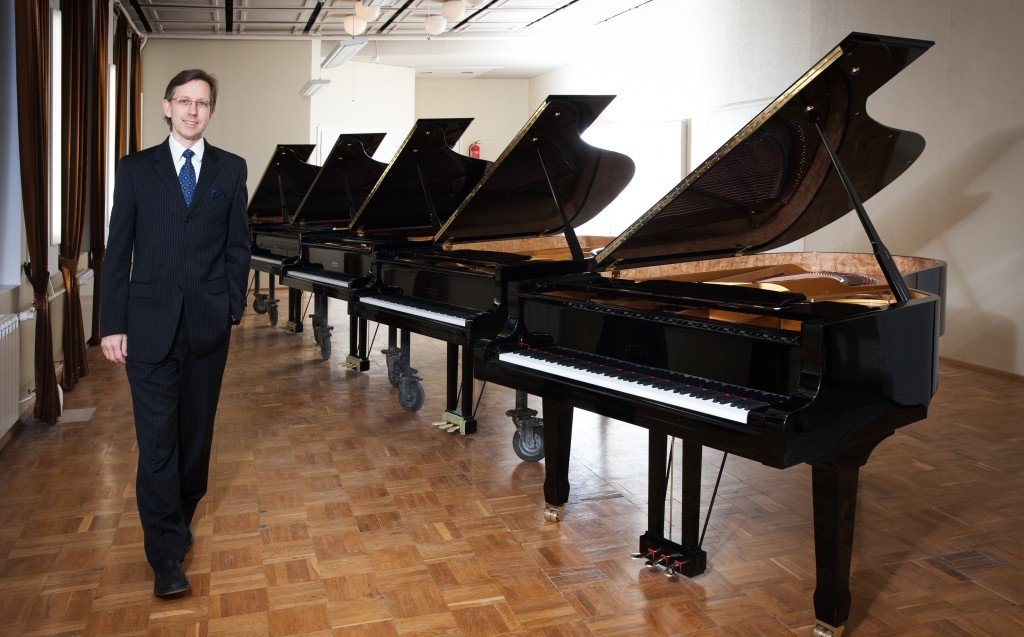
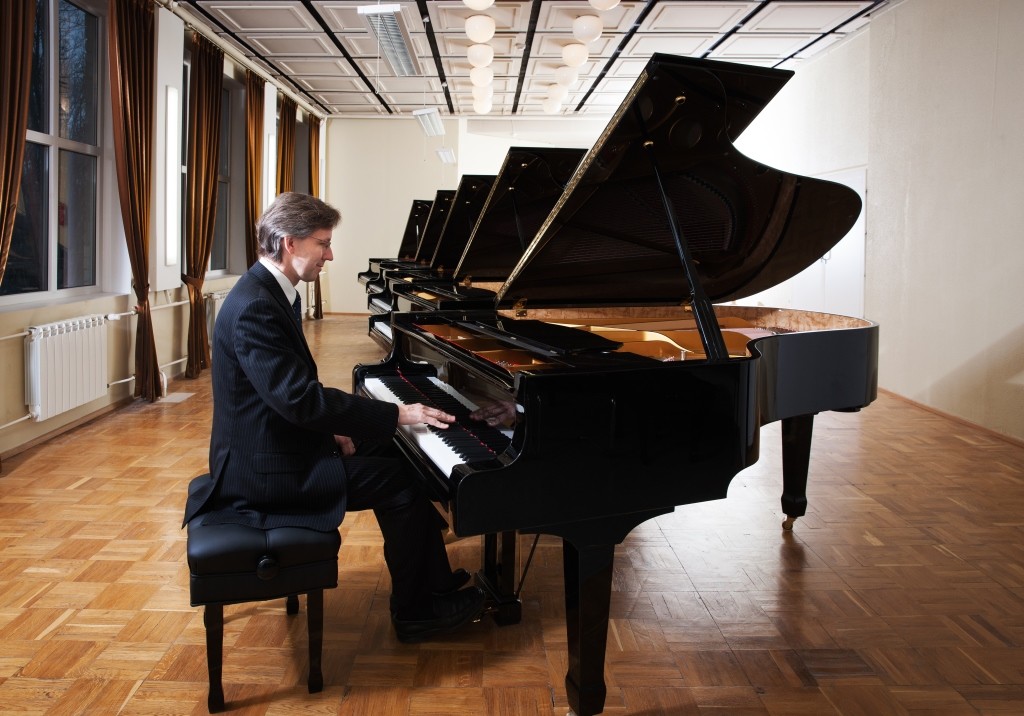
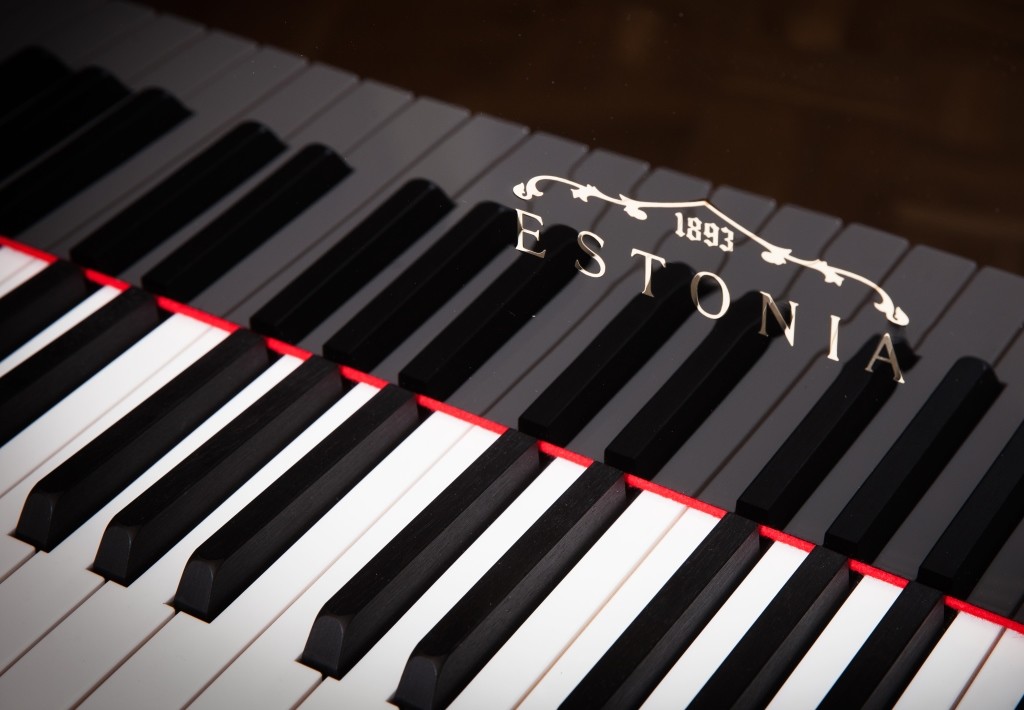
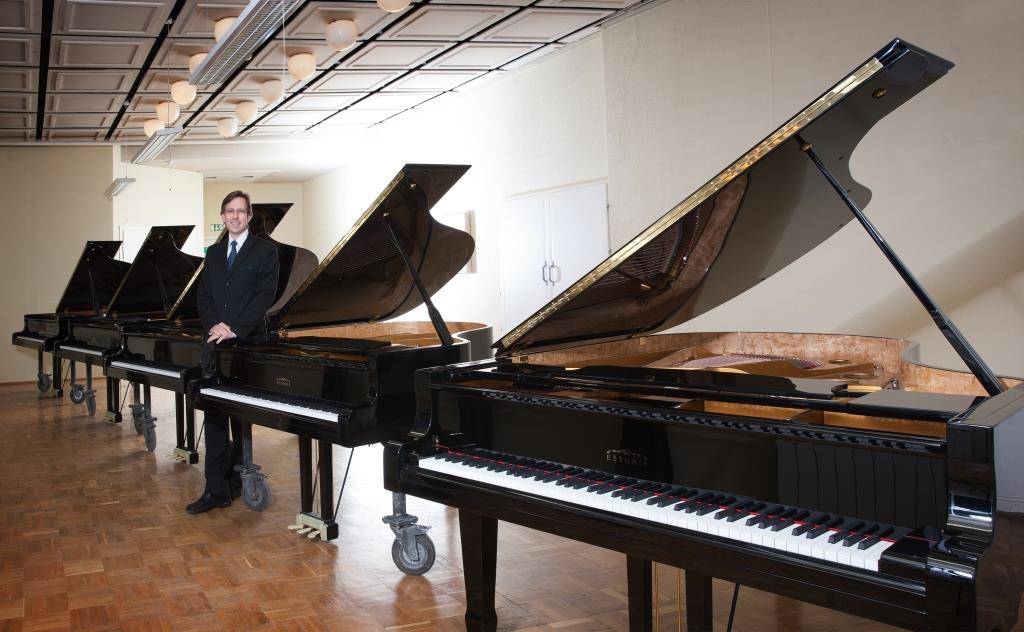
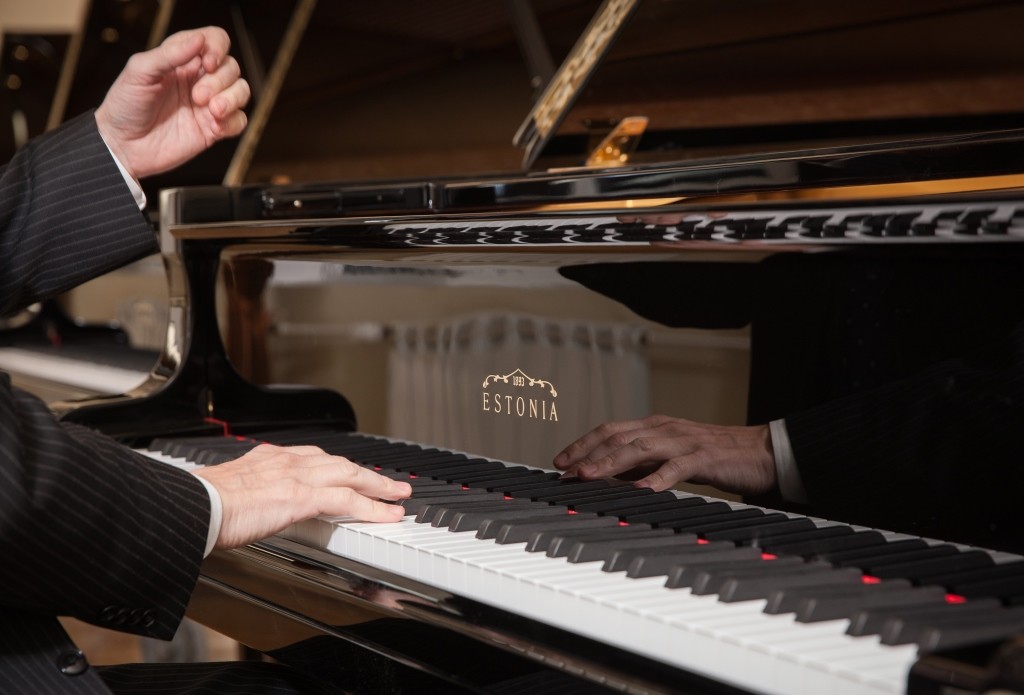
What a wonderful story. Estonia should be proud to have such man and product.The world has taken note…